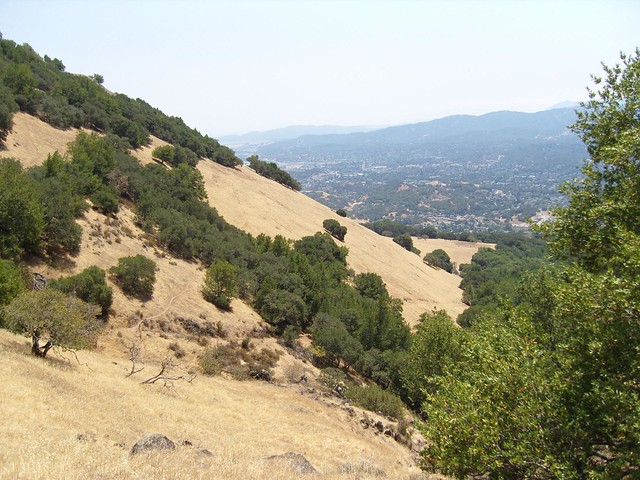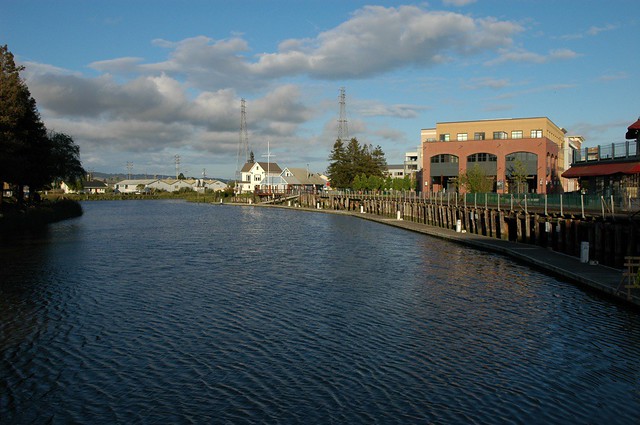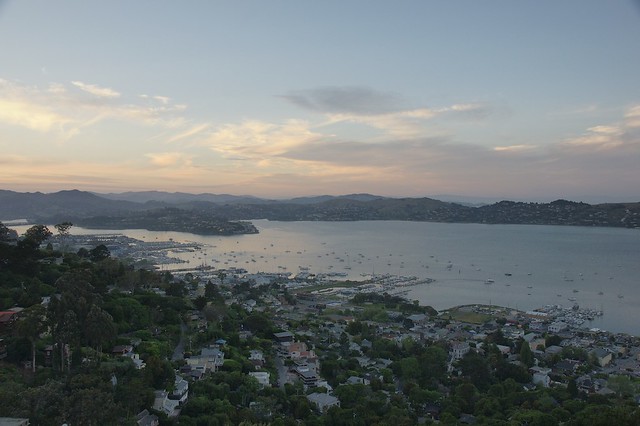If last month’s tragedy taught Novato anything, it’s that residents need to take road safety as seriously as they do housing elements. Lives, not just town character or property values, can hang on things we hardly ever think about. Where should the first stop sign be when we enter Novato? What about this road makes the speed limit seem so low? There are easy ways to reform Novato’s streets to be safer for drivers, bikers, and pedestrians, but they only take us so far. Going further would require Novato to rethink the fundamental purpose of its roads. But let’s start easy.
The Gateways
The points of greatest danger are the approaches into the city, where people transition from highway to city driving. In these areas, speeds officially fall from 45+ miles per hour down to 25 or 35, though roadway design and culture tack on another 5-10 miles per hour.
To bring people from highway mode and into city mode, Novato has employed stop signs and stop lights, but these are insufficient. Coverage of the Ratliff crash included quotes from people grousing about high vehicle speeds where she was killed, yet the only indication of a falling speed limit was the speed limit sign. Everything else about the road screamed at the driver, “It’s safe to drive fast here.”
European cities use a combination of special road paint, stop signs, and roundabouts to calm traffic and get drivers into urban driving mode. Roundabouts would be a bit much for a conservative city like Novato, but paint and stop signs certainly aren’t.

Different shoulder paint tells drivers that a change is coming, while a stop sign would clearly delineate where the change actually is. The key is to get drivers out of what is essentially an automatic driving mode and into a more attentive mode. On a rural road or Highway 101, one never expects things to jump out in front of the car. The road, through paint and a stop sign, will alert drivers to this change, making them more attentive to the increased complexity of city driving.
The Arterials
Novato’s streets are themselves unsafe. At a typical driving speed of 40 miles per hour, pedestrians hit have a very low chance of survival. At the same time, the streets can have lanes as wide as those on a freeway (about 12 feet), putting drivers back into a highway mode. These arterial roads should be redesigned for safety. Above all, that means narrowing lanes to 10 feet in a process called a lane diet.
Unlike a road diet, which removes lanes to provide space for a center turn lane or a median, a lane diet just narrows the existing lanes and gives the excess space over to parking, biking or sidewalks. Novato roads already have center turn lanes, medians, and parking. It’s hard to imagine using 28 feet (two lanes plus narrowing existing lanes) for anything useful without land accompanying land-use reforms.
But four 10-foot lanes with a center turn lane would do plenty of good for street safety. Lane diets reduce crash rates, sometimes as much as 43%. Vehicle speeds, too, are reduced by road diets and lane diets, meaning those crashes that do occur are less likely to be serious. The fact that street capacity would remain essentially unchanged is an added political bonus. Introducing lane diets to Novato arterials would make them objectively better roads.
The Bike Lanes

We still need to deal with 8 feet of extra road width on our dieted streets. Rather than using it on sidewalks, Novato should convert its class II bicycle lanes to class I cycle tracks.
Cycle tracks are fully separated bicycle paths that have buffers or barriers between them and the automobile traffic and are best suited for roads with high traffic volume or high vehicle speeds, i.e., arterial roads.
NACTO’s bicycle lane guide recommends cycle tracks widths of at least five feet with a three foot buffer. If we combine the width removed from our road lane diets with the width of existing class II bike lanes, there is enough space for a cycle track going in either direction. This improvement would increase safety for bicyclists by getting them away from car traffic without banishing them from the street entirely, increase safety for pedestrians by putting space between them and traffic, and increase bicycling by providing infrastructure appropriate to the road.
Costs are relatively minimal, at least compared to what we spend on road infrastructure. Cycle tracks typically range from about $100,000 to $165,000 per mile. For about $3.35 million, Novato could install cycle tracks on every arterial street in the city; it could do every rural arterial for about $970,000 more. Considering that we’re spending 270 times that on highway expansion, it might be worth more attention from TAM and city hall.
Such an expansive investment in bicycling in Novato would be transformative. While transit and walking aren’t terribly efficient modes of transportation through most of Novato, the bicycle is. If the city provided the infrastructure for in-city trips, it would cut down on traffic and improve the health and quality of life any resident that can ride. At least one study found that cycle tracks increase bicycling by 250% and that in turn increases safety for all road users, from driver to pedestrian, by making drivers more aware of vulnerable users and calming traffic.
Last week's post exhorted Novato to stand and say enough: enough death, enough apathy. Rather than leave it up to the process, Novatans should tell the council to fix gateways roads, shrink lanes, and invest in bicycle infrastructure that fits the needs of the road. It’s not an issue of road capacity, for it would hardly change. It’s an issue of political will on the part of Novato’s councilmembers, city staff, and residents. They have the power to make safe their city’s streets. Or they could call deaths on their streets inevitable and do nothing at all.
 The latest Marin Transit board meeting was one full of change and surprise. Amid increasing ridership (though it fell in June), MT posted a $1.5 million surplus, which will go into a rainy day fund. To keep ridership on the up and up, the agency hired a new communications and advertising consultant, who will manage MT's branding, website, social media, and communications strategy. IJ reporter Nels Johnson, however, seemed to think the $300,000 consultant was taking the agency "for a spin." And, in the name of efficiency, the MT board cut Route 222, which got less than 3 riders per hour in June. Elsewhere:
The latest Marin Transit board meeting was one full of change and surprise. Amid increasing ridership (though it fell in June), MT posted a $1.5 million surplus, which will go into a rainy day fund. To keep ridership on the up and up, the agency hired a new communications and advertising consultant, who will manage MT's branding, website, social media, and communications strategy. IJ reporter Nels Johnson, however, seemed to think the $300,000 consultant was taking the agency "for a spin." And, in the name of efficiency, the MT board cut Route 222, which got less than 3 riders per hour in June. Elsewhere:











